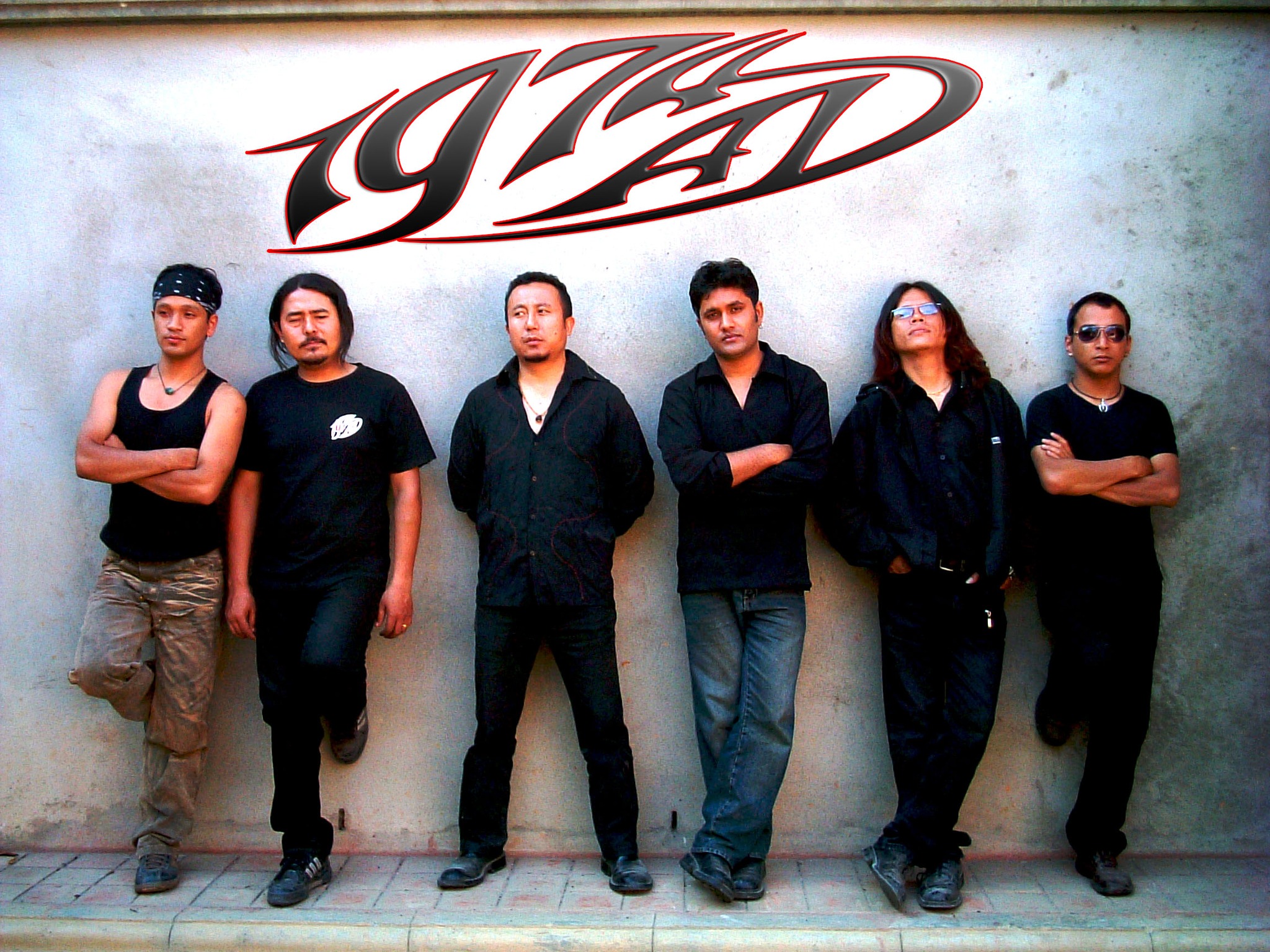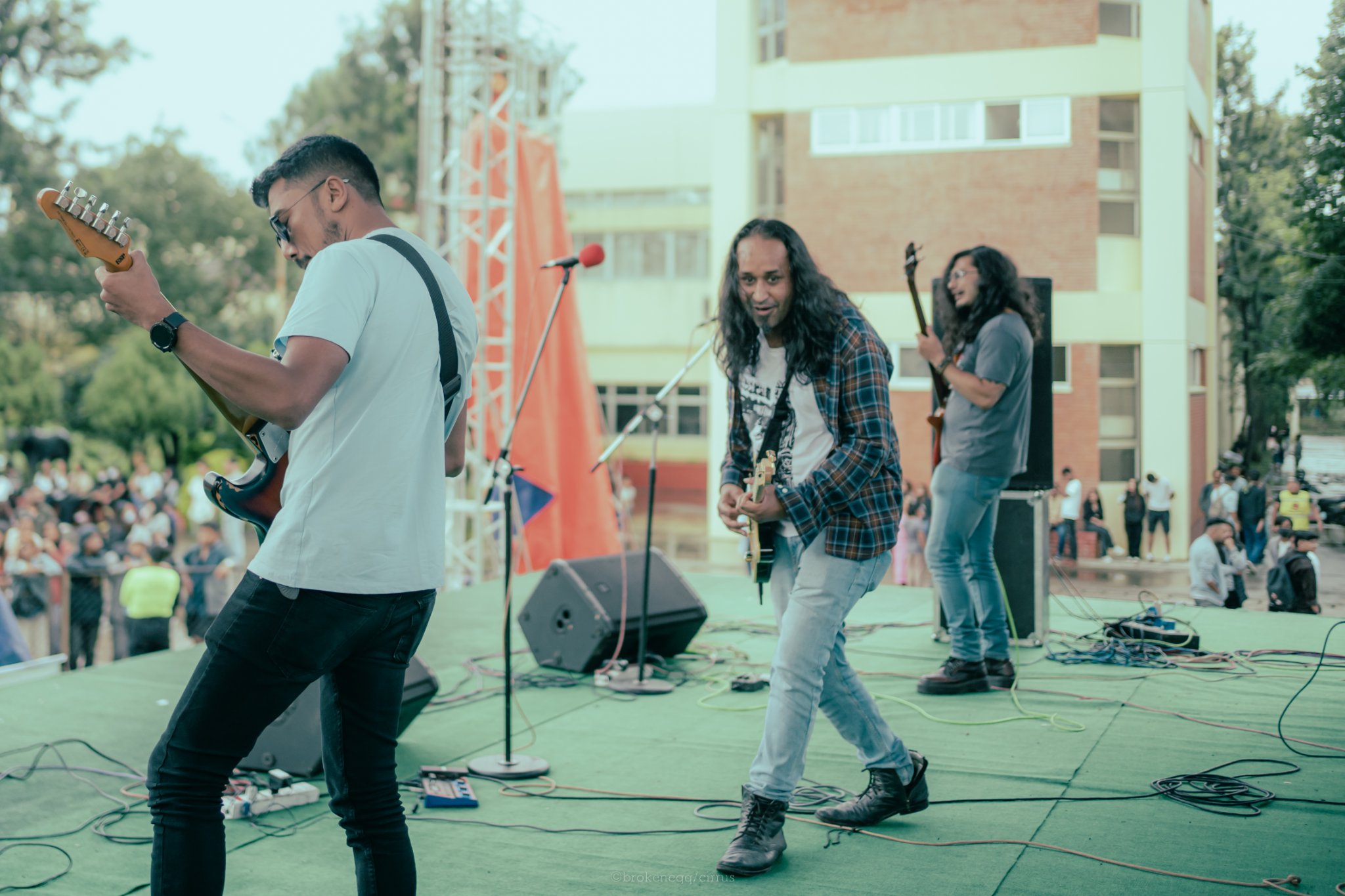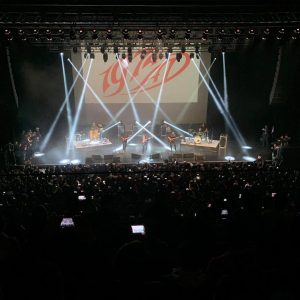
“Wonderful,” “more music,” “unity,” “explore,” and “travel”—these are just a few of the words that come to mind when the members of 1974 AD reflect on their three-decade journey. As the iconic rock band celebrates its 30th anniversary, they look back on a musical adventure filled with highs, lows, and a relentless drive to push beyond the boundaries of sound.
In 1992, Nirakar Yakthumba met Phiroj Syangden, who was working as a music teacher at Gyanodaya Bal Batika School, run by Yakthumba’s mother. They started jamming together, and over time, other friends joined in. By 1994, they had officially formed a band and performed their first professional concert in Kathmandu. As the band evolved, current members Manoj Kumar KC (guitarist), Adrian Pradhan (vocalist/drummer), Sanjay Shrestha (percussionist), and Manose Singh (flautist) also officially joined. Since then, the band has been a driving force in the Nepali music industry.
Today as 1974 AD celebrates its 30th anniversary, the band remains the most loved rock band of Nepal. In its history of three decades, the band travelled to different parts of the world. Currently, as well, the band is on a world tour, marking their thirtieth anniversary. They have completed shows in Japan and the USA. They just have not only entertained the listeners but have also united Nepalis all across the world. Additionally, the band has shown that it is possible to build a career through rock music.
Yakthumba, the bassist and the founding member of the band never thought that 1974 AD would be playing for three decades and make such a huge impact on Nepal’s music sector. He believes that their strong desire to do good music every time made all this possible.
“While playing songs like Nepali Ho and Rato Ra Chandra Surya, we can feel the sense of unity among all the Nepalis during our shows,” says Yakthumba.

Thirty years is not a small time, and for a rock band, especially in a country like Nepal, it is even more. While many bands disbanded quickly due to ego clashes among members or the departure of a band member to another country in search of better opportunities, 1974 AD managed to stay committed to their music. There are a handful of Nepali bands who have continued music for such a long period.
1974 AD is one of a kind of a band that has inspired every musician of contemporary Nepali music. A lot of bands and aspiring artists aspire to become like 1974 AD. All the Nepali artists of the current time, who are especially into the rock scene, have jammed up in the songs of 1974 AD. From beginners and experienced musicians, everyone loves to play their songs.
“Thirty years of togetherness as a band is a huge milestone,” says Bipul Chettri, singer/songwriter. “Thank you for showing us a way.”
According to the band, the love they earned from the fans and their passion for Nepali music are the two major factors that motivated them to continue music for this long.
Besides playing music together for all these years, another thing of the 1974 AD that should be praised is the consistency that they hold in creating quality music. They have given hit songs one after another and all of their albums have been loved by the listeners. Some of their popular tracks include Parelima, Gurasai Fulyo, Samjhi Baschu, Pinjada Ko Suga, Mutu Bhari Bhari and Timilai Piratile Badhula. The quality of the music is the most important aspect that they have been getting love from the listeners to date. All the members of the band accepted that it became possible due to the equal effort of everyone.
“Although we have personal differences, when we play together magic happens,” says Sanjay Shrestha, percussionist of the band.
Echoing Shrestha, Manoj Kumar KC, lead guitarist of the band tells about how they manage to create quality music. He says that the theoretical part of the song must be strong. “ It’s like making the movie; the movie can’t be good unless it has a good script.”
While talking about creating good music, KC opposes the widespread belief that technology is what makes music sound great.
“If your song is theoretically strong and has good music and lyrics, the song would sound beautiful even if it is recorded raw in a mobile device, ” says KC.
Further, he says over time all of the band members’ songwriting skills have been enhanced. About creating quality music Yakthumba appreciates the band’s collective ability to truly listen to and understand music.
“All our band members are deeply focused on music,” says Yakthumba. “We listen to various kinds of music, and also analyse them and learn from them.”
Despite making quality music for ages and garnering thousands of fans from all across the world, the band disbanded in 2014 due to internal issues, leaving many fans heartbroken for the second time. The first time was in 2009 when Phiroj Syangden left the band and moved to the USA. The news of their disbandment caused hullabaloo in the entire music fraternity of Nepal. The fans even mounted pressure to withdraw their decision to disband.
Late but not too late, the band in 2019 finally realised that they should reunite and play music together.
In April 2019, Nirakar Yakthumba and Adrian Pradhan coincidentally flew on the same flight to Thailand to watch the concert of John Mayer. Amid their casual conversation, both of them expressed their feelings for the reunion. Gradually, all the members showed equal interest in the reunion and then they reunited.
“We all had a mutual feeling to reunite the band but we just were not finding the medium to do it,” says Shrestha.
The band’s first song after the reunion Manchhe Ko Jeewan tells enough about how they reunited and their determination to continue music together.
The snippet of lyrics goes: “Bhagya Ley Jurayo / Samayele Bolayo / Sabaiko Bhawanalai / Ekai Sath Biujayo,” which means that time, fate, and the support of well-wishers all came together for the band’s reunion.

More than a band reunion the band members consider it as a “family reunion.”
All the band members say that after the reunion, all the members have become even more mature, and their relationship with each other has become more mature than earlier.
“The band has become stronger,” says Yakthumba.
All the band members say that after playing for all these years together they have understood each other well and have learnt to balance the ego.
Along with the change in relationship, the band also talked about how over time there has been change in their music-making process.
There was a time when all the members of 1974 AD used to be based in Nepal but now only half of them are based in their homeland and half of them are in the USA. The differences in the time zone have drastically changed the band’s song-making process.
“Earlier, we could get things done immediately, but with half the band now living abroad, we have to wait for a time that suits everyone,” says KC, who is also the band’s music producer. “This situation sometimes disrupts the momentum and makes it harder to keep up the same energy.
When it comes to the Nepali band, it is most often the front person who gets much of the popularity, but 1974 AD stands out in this context. Every member of the 1974 AD is equally popular with the listeners.
Regarding the popularity obtained equally by the members of the band Yakthumba says, “ We have a democratic team so during the music arrangement we listen and respect everyone’s opinion.”
The band says that they give equal opportunity and space to all instruments, whether it be in the studio or at concerts. According to the band, they do not do it intentionally, it all happens naturally. Furthermore, they say that they just do not care about the composition and lyrics, but also equally value the rhythm section. It doesn’t look good if only a single person is leading.
“We all should shine together,” says KC.


























